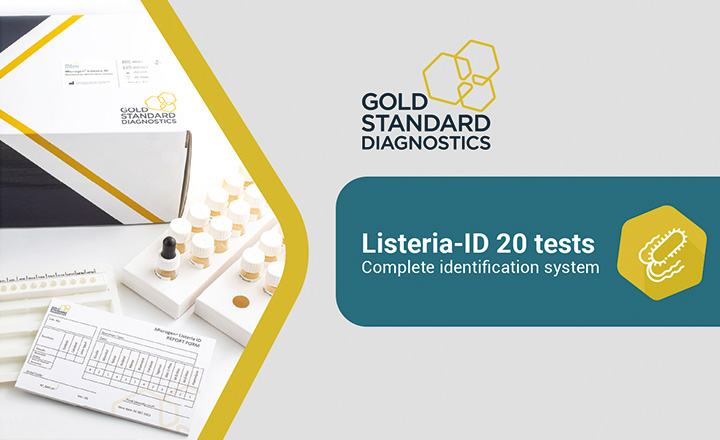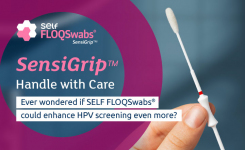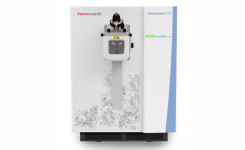MALDI-ToF mass spectrometry (MS) is transforming the workflow of microbiology labs, rapidly returning identification results, replacing laborious biochemical identification protocols in many laboratories worldwide, and saving lives by guiding faster diagnosis and therapy for the patient.
Its seemingly limitless capability in identifying infectious pathogens was further illustrated during Saturday's symposium at ECCMID 2023 'Changing microbiology: Revolutionary technologies enhancing today's diagnostics.' The event was sponsored by Bruker, and its MALDI ToF MS instruments were evaluated by Dr Sandra Graeber (Germany) and Marta Maia (Kenya) in their respective research areas.
"Invasive fungal infections are increasing worldwide, and current identification methods are time-consuming," said Dr Sandra Graeber as she introduced a new transfer method to allow Bruker's MADLI-ToF instruments to identify filamentous fungi and yeast-like fungi quicker.
Typically MALDI-ToF mass spectrometry allows the microbiologist to directly transfer a colony from a petri dish to a target plate, enabling rapid identification and avoiding the traditional multi-step process that requires extraction.
However, Bruker has developed a novel method with an even faster workflow, the 'Optimized extended direct transfer method,' that is simply a reversal of the standard direct transfer and is now CE-IVD approved. While evaluating this method for identifying filamentous fungi, Dr Graeber discovered that picking the very young undifferentiated mycelium from the plate was necessary for Bruker's Biotyper to accurately identify fungi and not the conidia that would be typically used for microscopic identification. Bruker's sirius IVD system can now identify 222 filamentous fungi with high accuracy using the new sample preparation system known as Mycelium Transfer (MyT).
Knowing which part of the organism to use on the MALDI-ToF is also crucial for Medical Entomologist Marta Ferreira Maia when she IDs mosquitos. The malaria vector's cephalothorax is used as the specimen to collect MALDI spectra data for all the different species in Kenya as part of its malaria vector surveillance programme.
Vector control has halved Africa's malaria numbers since it was introduced, and Marta believes that MALDI-ToF can transform malaria vector surveillance by improving evidence generated for decision-making.
Understanding the ecology of the different species of mosquitos in an area will aid vector control. They can differ in when and where they feed, i.e., species that feed indoors can be controlled by mosquito nets. But, morphological identification is not enough, as they all look identical. On using the MALDI-ToF MS, Marta, and her team were able to build a library from 1,971 spectra collected from 2332 Anopheles mosquitos and achieve an accuracy of 97.5%.
Marta finds MALDI-ToF a cost-effective, high-throughput method that can easily replace various current methods. It could improve control over the Anopheles Stephansai species, an Asian invasive malaria vector morphologically identical to common species. This mosquito breeds in urban areas, not ordinarily endemic for malaria, but that could easily change if that species gets a foothold, says Marta, and right now, the MALDI-ToF MS is the instrument that can accurately identify this vector.
The latest model of the MALDI-ToF Biotyper, released two years ago, upgraded to a 200-Hertz laser from the previous version's 60 Hz, and according to Dr. Christine Messner, Sales Rep at Bruker, "this enables faster identification of the organism. Now we can measure 95 samples plus standard within 7 minutes, when before that took 15-20 minutes."
This new version complies with the new IVD regulation (IVD-R) implemented in May 2022. Christine says throughout the ECCMID conference, some customers had asked about requirements under the new regulation. "With the IVD-R, labs must use the IVD software, library, and consumables. These should be used per new regulation. Before the new IVD-R, you could use in-house assays. Now that in-house assay needs to be validated to an IVD-R approved test, i.e., on the market. Labs must also use the standard in every run, whereas before, they could decide how often to run it once a day, for instance. Now with the new IVD-R, it's very strict that you need to use standard every run. The standard, E. coli, with additional proteins, is certified and purchased from us."
The use of AI approaches on large MALDI-ToF datasets from microbial identification has opened up new possibilities in research and future diagnostics and is already being explored by MALDI-ToF users. Recently, machine learning techniques have been leveraged to maximally exploit the information in MALDI-TOF MS maximally, aiming to refine species identification and streamline antimicrobial resistance determination.























